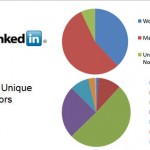Internet in China: Rapid growth with increasing mobile users
How internet quickly developed in China
As internet became prevalent in the late 1990’s, it quickly emerged across China. China’s internet penetration has grown from 2.1 million at the end of 1998, to 854 million active users as in June 2019. Up to 2017, 54.3% of total population was internet users in China. No doubt that Internet in China is a major tool to for promotion and other purposes.
Something unique about internet usage in China, is 99.1% of total Chinese internet use is through mobile instead of laptop or desktop. This is around 847 million people. Hence, the future growth of Internet use in China will be largely dependent upon the development of Apps, E-commerce platforms, and new retail that incorporates digital into brick and mortar retail.

[Source: CNNIC&Worldbank Growth of active Chinese Internet Users]
An overview of online platforms on the internet in China
The competition of online platforms in China is very intense. Chinese internet users spend hours each day scrolling through different platforms to find the information they need or to fulfil their daily amusement purposes. Therefore, online platforms in China play a vital role in influencing and redesigning consumer journey and individual touch-points along the journey. There are three main types of online platforms in China: E-commerce platforms in China; Social Media platforms in China; and Q&A based popular science platforms in China.
E-commerce platforms in China
There are many E-commerce platforms in China, including TMall, JD.com, Pinduoduo and Kaola.com etc. These E-commerce platforms all focus on different purposes in order to differentiate themselves from one another. i.e. Pinduoduo emphasise on bundle and bargain goods and Kaola.com emphasise on cross-boarder shopping experiences. However, the E-commerce giants Taobao, Tmall and JD.com occupy most market share within the industry.
TMall
Tmall is the largest B2C E-commerce marketplace in the world. Many smaller international brands often use Tmall to test-water their product marketability. It aims in providing quality International goods to domestic Chinese consumers. However, the rules and regulations to enter TMall are fairly strict. E-commerce in China is still huge and continues to grow, which can be shown from Mall’s double 11 sales this year of ¥268.4 billion Yuan.

[Source: tmall.com E-commerce platforms in China – Tmall]
JD.com
JD.com is the second largest E-commerce platform in China after Alibaba, which owns TMall and Taobao. The brands on JD.com is mostly run be JD.com itself rather than directly run by brands on TMall. Although JD.com does not offer as much brands as TMall does, many Chinese consumers still choose to shop with JD.com mainly due to the reason that JD.com offers faster delivery with their own logistics network.

[Source: JD.com E-commerce platforms in China – JD.com]
Notably, the boundary between E-commerce platforms in China and social media platforms in China is becoming more and more vague. Increasing brands are trying to incorporate shopping as a part of their social media experiences. Countless advantages lies ahead for brands that become more independent while rely less on E-commerce giants like Tmall and JD.com. Such brands will be more likely to develop private traffic flow, and to increase brand loyalty and revenue.
Social Media platforms in China
Weibo, more or less a Twitter-Facebook hybrid, is run by technology company Sina Corporation. Its active users have grown from 300 million in 2012 to 462 million in 2019. Many companies use weibo for marketing purposes such as to increase brand awareness and top-of-mind awareness etc. It has some political influence in which politically sensitive posts will be removed by site regulators, providing a means for users to know the boundaries, and it seems to work.

[Source: weibo.com Social Media platforms in China –Weibo]
QQ is a free instant messaging computer program in mainland China. It now provides chat feature, games, virtual pets, ringtone downloads, blogs, weibo, etc. As of 30 September 2011, there were 711.7 million active user accounts for QQ IM. It was previously the most popular communication tool in China, but has since been outperformed by WeChat.
Chinese people rely on mobile instant messaging. Wechat, the mobile internet messaging service has already become part of the mainstream of Chinese internet users’ daily life. Whether you call them a fast follower or an unashamed copycat, Tencent is adept at spotting and pushing the latest internet trends to its vast user base by launching WeChat. From the start, WeChat was likely a clone of Talkbox, an instant voice messaging startup from Hong Kong. And now it has much more features and users. Now with the development of WeChat mini-programs, users are allowed to make purchase, play games, learn information etc. WeChat mini-programs have is very accessible and convenient.

[Source: weixin.qq.com Social Media platforms in China – WeChat]
Xiaohongshu
Xiaohongshu (Little red book) is a lifestyle sharing platform, in which people posts travel tips, food, beauty or any other lifestyle related information on. It recently reached over 200 million registered users, with millennials being the most active user group. Xiaohongshu has gradually transformed from a content-oriented social platform into a hybrid of social media and E-commerce.

[Source: Xiaohongshu Social Media platforms in China – Xiaohongshu]
Q&A based platforms in China
Douban
Many online platforms in China adopt lazy stereotypes in which they just copy existing platform models and then perfect its features. However, Douban was surprisingly original since it launched in 2005. It attracted some of the top Chinese intellectuals, geeks, and urban hipsters to exchange thoughts and ideas. It provides a platform in which users could post freely on social issues in forum-like groups. This particular feature of Douban has more than once landed it in controversy and been a target of Chinese government censorship programs.

[Source: douban.com Q&A based popular science platforms in China – Douban]
Zhihu
Zhihu is a similar Q&A based online platform to Douban. It provides high-quality questions and credible answers to different questions. There are 200 million registered users as of 2018, with over 120 million answers on the platform. Different from Douban, Zhihu has a broader range of questions asked, which can be from intellectual to entertainment based ones.

[Source: zhihu.com Q&A based popular science platforms in China – Zhihu]
Overall, internet use in China continues to grow as users switch from old to new platforms, and older platforms transform into different business models to retarget consumers.
Let China Paradigm have a positive impact on your business!
Listen to China Paradigm on iTunes











![[Podcast] China paradigm #20: How to get the most out of XiaoHongShu](../wp-content/uploads/2019/04/China-paradigm-China-business-podcast-20-150x150.jpg)




